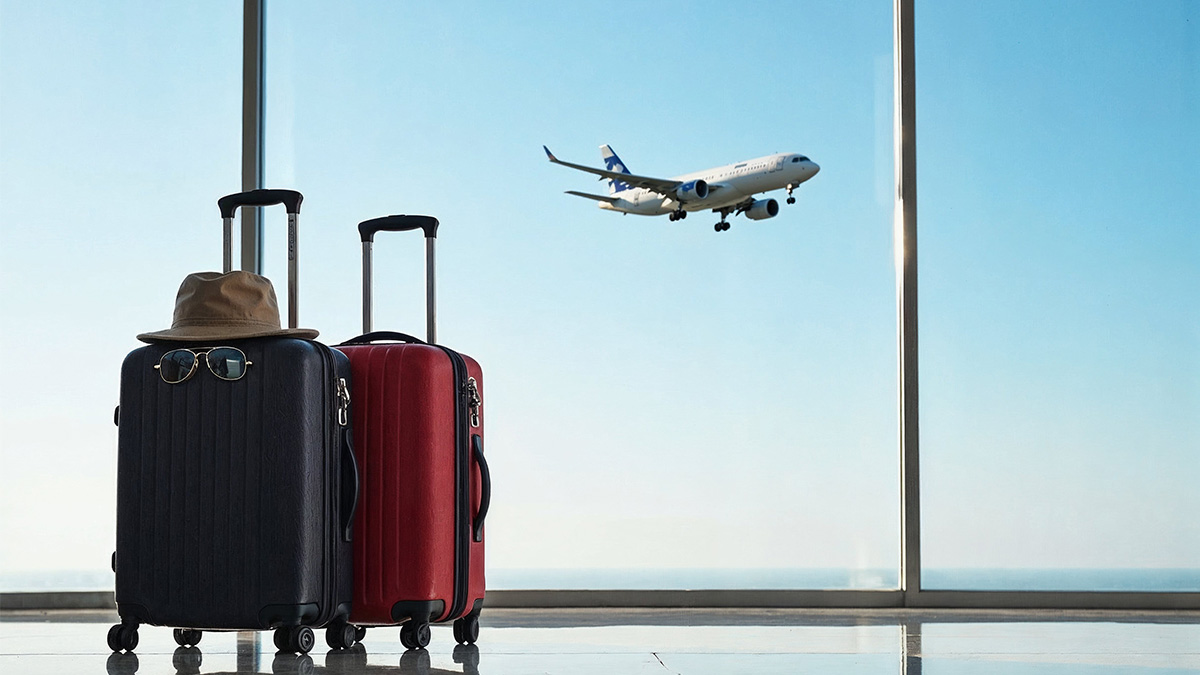Airline profitability to strengthen slightly in 2025 despite headwinds
- 6/2/2025
- 169 Day

The International Air Transport
Association (IATA) announced updates to its 2025 airline industry financial
outlook, showing improved profitability over 2024 and resilience in the face of
global economic and political shifts.
“The first half of 2025 has brought significant
uncertainties to global markets. Nonetheless, by many measures including net
profits, it will still be a better year for airlines than 2024, although
slightly below our previous projections. The biggest positive driver is the
price of jet fuel which has fallen 13% compared with 2024 and 1% below previous
estimates. Moreover, we anticipate airlines flying more people and more cargo
in 2025 than they did in 2024, even if previous demand projections have been
dented by trade tensions and falls in consumer confidence. The result is an
improvement of net margins from 3.4% in 2024 to 3.7% in 2025. That’s still
about half the average profitability across all industries. But considering the
headwinds, it’s a strong result that demonstrates the resilience that airlines
have worked hard to fortify,” said Willie Walsh, IATA’s Director General.
Perspective
“Perspective is critical to put into context such
large industry-wide aggregate figures. Earning a $36 billion profit is
significant. But that equates to just $7.20 per passenger per segment. It’s
still a thin buffer and any new tax, increase in airport or navigation charge,
demand shock or costly regulation will quickly put the industry’s resilience to
the test. Policymakers who rely on airlines as the core of a value chain that
employs 86.5 million people and supports 3.9% of global economic activity, must
keep this clearly in focus,” said Walsh.
Outlook Drivers
Gross Domestic Product (GDP) is the traditional driver
of airline economics. However, although global GDP growth is expected to fall
from 3.3% in 2024 to 2.5% in 2025, airline profitability is expected to
improve. This is largely on the back of falling oil prices. Meanwhile,
continued strong employment and moderating inflation projections are expected
to keep demand growing, even if not as fast as previously projected.
Efficiency is another significant driver of the
outlook. Passenger load factors are expected to reach an all-time high in 2025
with a full-year average of 84.0%, as fleet expansion and modernization remains
challenging amid supply chain failures in the aerospace sector.
Overall, total revenues are expected to grow by 1.3%,
outpacing a 1.0% increase in total expenses, shoring up industry profitability.
Revenue
Industry revenues are expected to reach a historic
high of $979 billion in 2025 (+1.3% on 2024).
Passenger Revenues
Passenger revenues are expected to reach $693 billion
in 2025 (+1.6% on 2024), an all-time high. This will be bolstered by an
additional $144 billion in ancillary revenues (+6.7% on 2024).
Passenger growth (measured in Revenue Passenger
Kilometers/RPK) is expected to be 5.8%—a significant normalization after the
exceptional double-digit growth of the pandemic recovery.
It is expected that passenger yields will fall by 4.0%
compared with 2024. This is largely reflective of the impact of lower oil
prices and strong industry competition. This will continue the trend of
travelers benefiting from ever-more affordable air travel. The real average
return airfare (in 2024 US dollars) is expected to be $374 in 2025. This is 40%
below 2014 levels.
IATA’s April 2025 polling data supports
projections for demand growth:
Some 40% of respondents expect to travel more over the
next 12 months than they did in the previous 12-month period. The majority
(53%) said that they expect to travel as much as they did in the previous 12
months. Only 6% reported that they expect to travel less.
Some 47% of respondents expect to spend more on travel
over the next 12 months than they did in the previous 12 months. An almost
equal proportion (45%) expect to spend the same on travel over the next 12
months while only 8% expect to spend less.
Although 85% expected trade tensions to impact the
economy in which they reside and 73% expect to be personally impacted, 68% of
business travelers (50% of those polled) expected increased business travel
amid trade tensions to visit customers, and 65% said trade tensions would have
no impact on their travel habits.
Cargo Revenues
Cargo revenues are expected to be $142 billion in 2025
(-4.7% on 2024).
This is primarily based on the expected impact of
reduced GDP growth largely influenced by trade-dampening protectionist
measures, including tariffs. As a result, air cargo growth is expected to slow
to 0.7% in 2025 (from 11.3% in 2024). The cargo yield is also expected to
reduce by 5.2%, reflecting a combination of slower demand growth and lower oil
prices.
Although significant uncertainty remains on how trade
tensions will evolve over the year, as of April cargo demand was holding up
well with a 5.8% year-on-year increase.
Expenses
Industry expenses are expected to grow to $913 billion
in 2025 (+1.0% on 2024).
Jet fuel is expected to average $86/barrel in 2025
(well below the $99 average in 2024), translating into a total fuel bill of
$236 billion, accounting for 25.8% of all operating costs. This is $25 billion
lower than the $261 billion in 2024. Recent financial data show minimal fuel
hedging activity over the past year, indicating that airlines will generally
benefit from the reduced fuel cost. It is not expected that fuel will be
impacted by trade tensions.
Sustainable Aviation Fuel (SAF) production is expected
to grow to two million tonnes (Mt) in 2025, accounting for just 0.7% of airline
fuel use. SAF production will double from the 1 Mt produced in 2024 (all of
which was purchased by airlines), but production needs an exponential expansion
to meet the demands of the industry’s commitment to net zero carbon emissions
by 2050.
IATA estimates that the average cost of SAF in 2024
was 3.1 times that of jet fuel, for a total additional cost of $1.6 billion. In
2025, the global average cost for SAF is expected to be 4.2 times that of jet
fuel. This extra cost is largely the result of SAF 'compliance fees’ being
levied by European fuel suppliers to hedge their potential costs as a result of
European SAF mandates to include 2% SAF in the jet fuel supply.
“The behavior of fuel suppliers in fulfilling the SAF
mandates is an outrage. The cost of achieving net zero carbon emissions by 2050
is estimated to be an enormous $4.7 trillion. Fuel suppliers must stop
profiteering on the limited SAF supplies available and ramp up production to
meet the legitimate needs of their customers,” said Walsh.
The cost of the Carbon Offsetting Reduction Scheme for
International Airlines (CORSIA) to airlines is expected to reach $1 billion in
2025. The market for CORSIA credits will grow, but Guyana is the only country
to have issued certificates for the high-quality credits that the scheme
requires.
Fleet/Supply Chain
The aircraft backlog exceeds 17,000 (sharply up from
the 10,000-11,000 pre-pandemic), with an implied wait time of 14 years. Should
states exit from a multilateral agreement exempting aircraft from tariffs,
supply chain constraints and production limitations could be further
aggravated.
Supply chain issues have had significant negative
impacts on airlines: driving-up leasing costs, increasing the average fleet age
to 15 years (from 13 in 2015), cutting the fleet replacement rate to half the
5-6% of 2020, and reducing the efficiency of fleet utilization (using larger
aircraft than needed on some routes, for example).
In 2025, 1,692 aircraft are expected to be delivered.
Although this would mark the highest level since 2018, it is almost 26% lower
than year-ago estimates. Further downward revisions are likely, given that
supply chain issues are expected to persist in 2025 and possibly to the end of
the decade.
Engine problems and a shortage of spare parts
exacerbate the situation and have caused record-high groundings of certain
aircraft types. The number of aircraft younger than 10 years in storage is
currently more than 1,100, constituting 3.8% of the total fleet compared with
1.3% between 2015 and 2018. Nearly 70% of these grounded aircraft are equipped
with PW1000G engines.
“Manufacturers continue to let their airline customers
down. Every airline is frustrated that these problems have persisted so long.
And indications that it could take until the end of the decade to fix them are
off-the-chart unacceptable!” said Walsh.
Risks
With ongoing geopolitical and economic uncertainties,
the most significant risks to the industry outlook include:
Conflict:The
resolution of conflicts such as the Russia-Ukraine war would have a benefit for
airlines in reconnecting de-linked economies and reopening airspace.
Conversely, any expansion of military activity could have a dampening effect.
Trade tensions:
Tariffs and prolonged trade wars dampen demand for air cargo and potentially
travel. Additionally, the uncertainty over how the Trump Administration’s trade
policies will evolve could hold back critical business decisions that drive
economic activity, and with it the demand for air cargo and business travel.
Fragmentation:
Global standards have always been critical for aviation. Fragmentation of
global standards or weakening of multilateral institutions and agreements could
bring additional costs to airlines with a more complex or unstable regulatory
environment. This includes the evolution of policies on climate, trade,
facilitation and a myriad of other matters impacting airline strategic
decision-making and operations.
Oil prices: Oil
prices are a major driver of airline profitability. The complex array of
factors impacting oil prices (including economic growth projections, the amount
of extraction activity undertaken, policies on decarbonization, sanctions,
availability of refining capacity, and transport blockages) can produce quick
shifts in pricing volatility with significant impact on airline financial
prospects.
Regional Roundup
All regions are expected to deliver collective net
profits in 2025. Most will see their financial performance improve compared
with 2024, with Latin America being the exception. Profitability, however,
varies widely by carrier and by region. The collective net profit margin of
African airlines is expected to be the weakest at 1.3% while carriers in the
Middle East are forecast to be the strongest at 8.7%.
Highlights from the expected 2025 financial
performance include:
Net profits at $36.0 billion, improved from the $32.4
billion earned in 2024, but slightly down on the previously projected $36.6
billion (December 2024).
Net profit margin at 3.7%, improved from the 3.4%
earned in 2024 and the previously projected 3.6%.
Return on invested capital at 6.7%, improved from the
6.6% earned in 2024 and largely unchanged from previous projections.
Operating profits at $66.0 billion, improved from an
estimated $61.9 billion in 2024, but down from the previously projected $67.5
billion.
Total revenues at a record high of $979 billion (+1.3%
on 2024, but below the $1 trillion previously projected).
Total expenses at $913 billion (+1.0% on 2024, but
below the previously projected $940 billion).
Total traveler numbers reaching a record high 4.99
billion (+4% on 2024, but below the previously projected 5.22 billion).
Total air cargo volumes reaching 69 million tonnes
(+0.6% on 2024, but below the previously projected 72.5 million tonnes).








